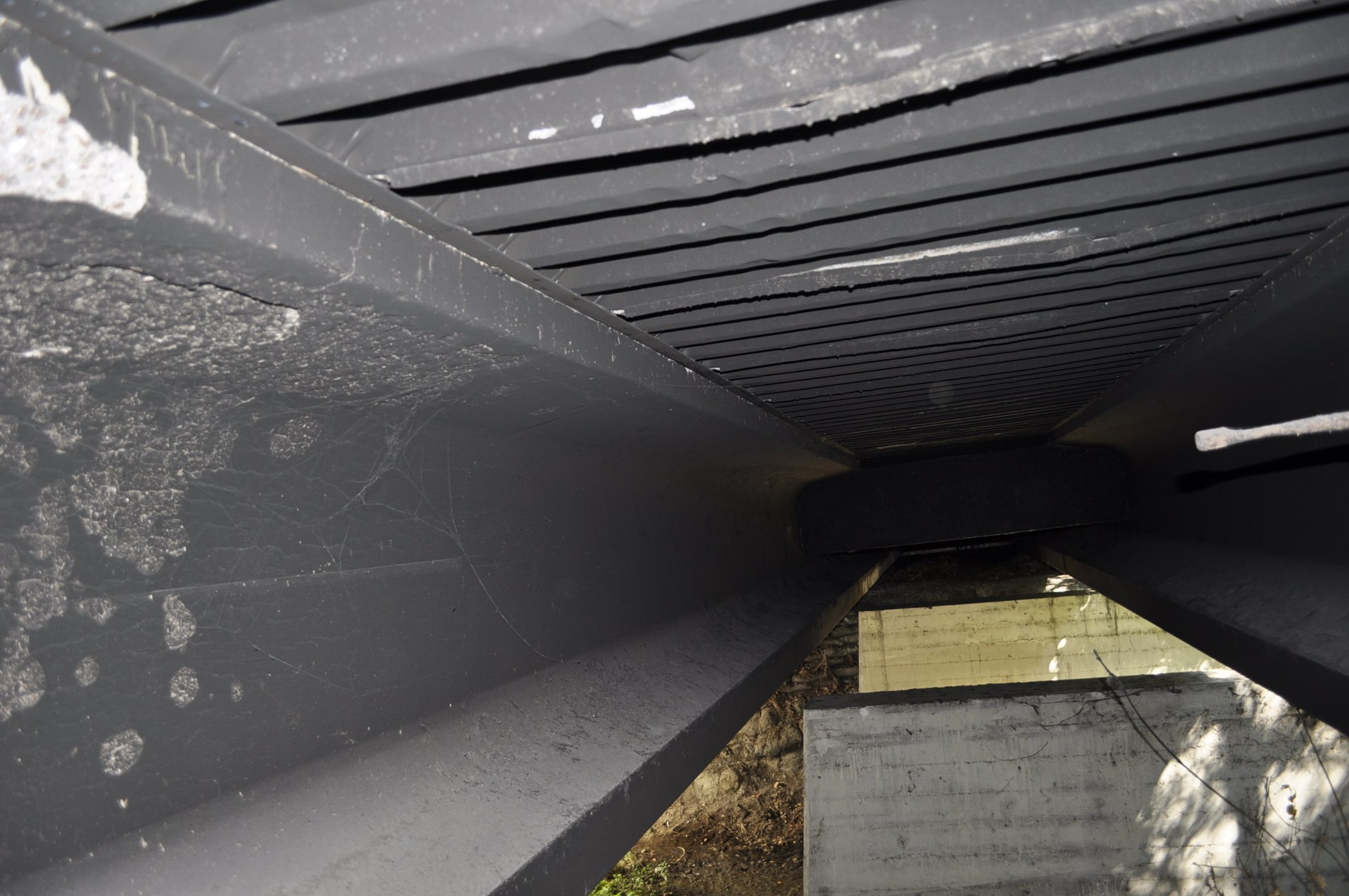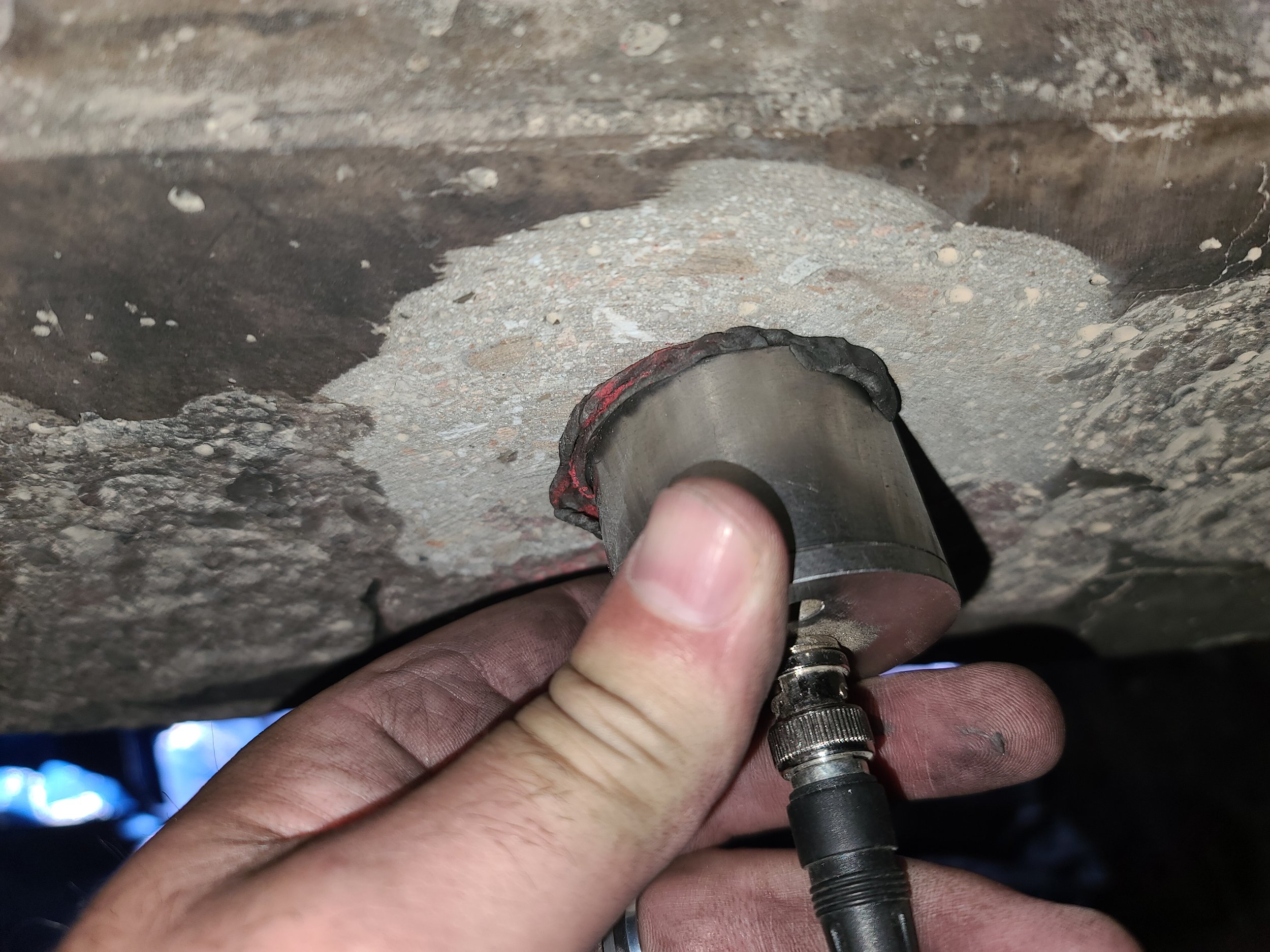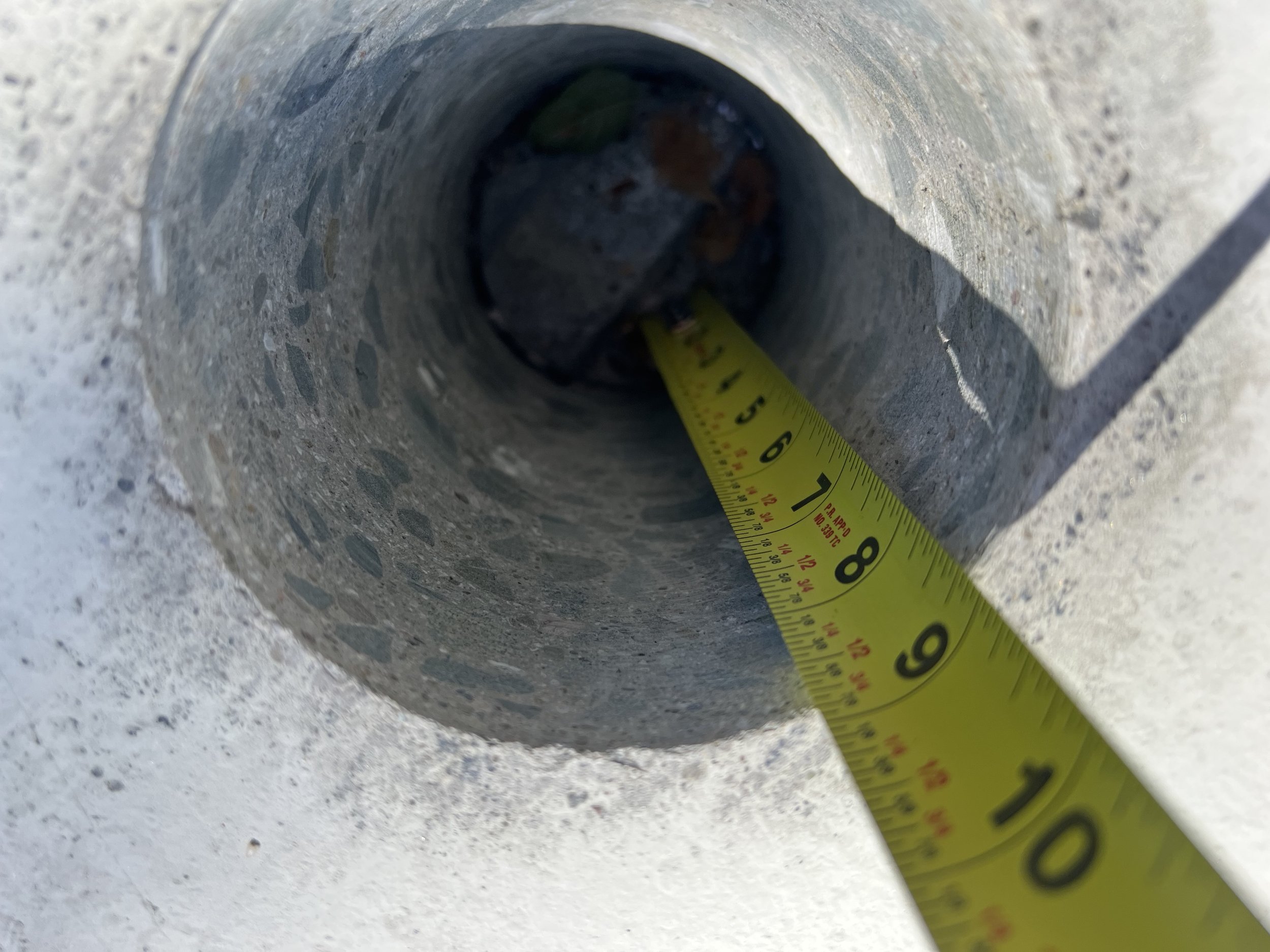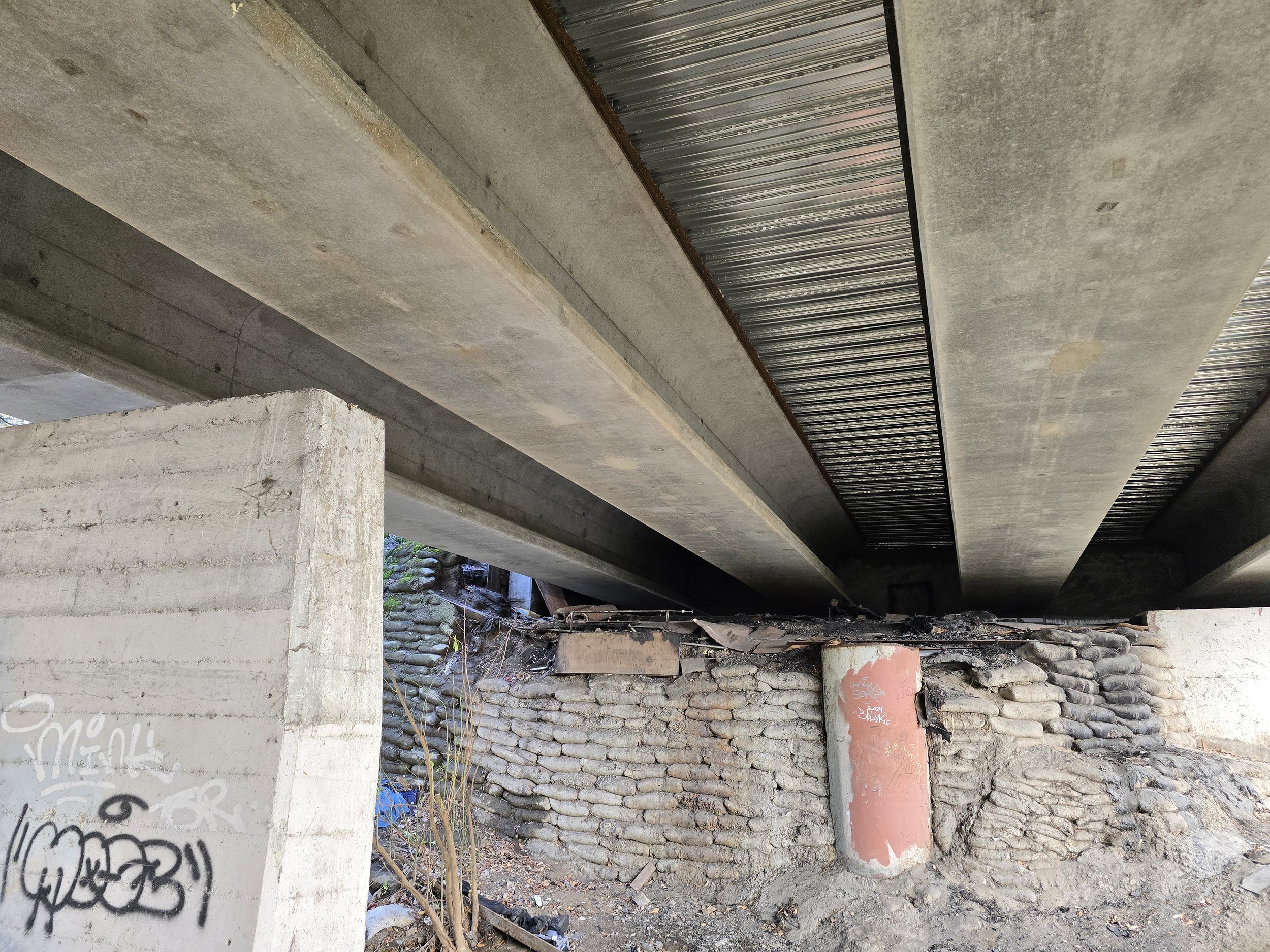
Assessing Fire Damage: Structural Investigation of a Bridge Girder After a Trash Fire
Overview
In response to a fire incident on June 7, 2023, at a pedestrian bridge in Walnut Creek, CA, Concrete Science, Inc. conducted a comprehensive fire damage assessment on four bridge girders. The fire, caused by burning rubbish beneath the structure, lasted approximately 2.5 hours and subjected the girders to extreme heat exposure. The assessment aimed to determine the extent of structural degradation, evaluate concrete integrity, and identify areas requiring repair or reinforcement.
The study involved field testing, petrographic analysis, and material condition evaluation to understand the fire's impact. Our engineers and petrographer conducted pulse velocity tests and microscopic petrographic analysis on core samples to detect changes in cement hydration, aggregate stability, and microcracking. The objective was to provide actionable recommendations to restore the bridge's integrity and enhance its resilience.
Scope of Work
Conducted pulse velocity testing on both fire-exposed and non-fire exposed sides of the bridge girders.
Compared pulse velocity readings across different sections of the girders to identify variations in structural integrity.
Documented visible fire damage, including spalling, cracking, and delamination.
Assessed surface conditions to determine the extent of fire penetration and material degradation.
Received eight concrete core samples from both fire-damaged and unaffected areas for detailed analysis.
Conducted petrographic analysis to examine heat-induced effects, including cement paste alteration, aggregate reactions, microcracking, and crystalline transformations.
Measured depth of carbonation and fire-induced changes in concrete composition.
Verified microstructural changes in fire-exposed samples using petrographic microscopy and chemical analysis.
Material Condition Assessment
Evaluated concrete integrity using petrographic data and field test results.
Identify areas of significant material loss and estimated remaining service life of fire-exposed sections.
Provide targeted repair recommendations to address damage and enhance structural durability.
Key Findings
Fire-Exposed Side (West):
Web sections of all bridge girders showed minor surface spalling but remained structurally intact.
Lower flanges exhibited severe spalling, cracking, and delamination, with significantly reduced pulse velocity readings. Pulse velocities in these areas averaged 7,300 to 8,100 ft/sec, far below the threshold of 12,000 ft/sec, indicating serious fire-induced deterioration.
Readings in the web sections were higher, averaging 13,600 to 15,300 ft/sec, confirming that structural integrity remained largely intact in those areas.
Pulse velocity data showed a clear contrast between fire-damaged and unaffected sections, aiding in the targeted repair strategy.
Non-Fire Side (East):
No significant damage observed.
Pulse velocity readings ranged between 15,200 to 15,350 ft/sec, confirming that concrete remained in good structural condition with no fire-related deterioration.
Fire-Affected Concrete Cores (West Side):
Surface spalling, black soot deposits, and severe microcracking detected.
Petrographic analysis revealed cement paste dehydration, crystalline phase changes, and heat-induced fractures within the concrete matrix.
Aggregate discoloration observed at depths of up to 0.08 inches, confirming thermal exposure effects.
Pulse velocity and petrographic results were consistent, confirming significant material degradation in fire-exposed areas.
Non-Fire Cores (East Side):
No substantial fire-related deterioration.
Minor carbonation detected at depths ranging from 0.03 to 0.61 inches, consistent with normal concrete aging.
Pulse velocity confirmed no internal voids or damage, ensuring structural stability.
2. Laboratory Testing & Petrographic Analysis Results
Solutions and Recommendations
Structural Repairs & Girder Rehabilitation
Lower flanges require immediate structural repair due to severe fire damage.
Evaluation needed to determine optimal strengthening solutions for long-term durability.
Utilize high-strength repair materials to restore lost concrete volume and enhance fire resistance.
Protective Measures for Fire Prevention & Concrete Longevity
Apply anti-carbonation coatings to mitigate reinforcement corrosion.
Implement enhanced fire protection strategies for vulnerable bridge components.
Solutions and Recommendation
Option 1: Structural Repairs & Girder Rehabilitation
Lower flanges require immediate structural repair due to severe fire damage.
Evaluation needed to determine optimal strengthening solutions for long-term durability.
Utilize high-strength repair materials to restore lost concrete volume and enhance fire resistance.
Option 2: Protective Measures for Fire Prevention & Concrete Longevity
Apply anti-carbonation coatings to mitigate reinforcement corrosion.
Implement enhanced fire protection strategies for vulnerable bridge components.
Outcome of the Fire Damage Investigation
The web sections of the bridge girders remained intact, ensuring overall structural stability, while the lower flanges exhibited severe fire damage, requiring targeted repairs. The client received comprehensive, data-driven recommendations for bridge restoration, condition monitoring, and fire prevention strategies to mitigate future risks. Findings from this fire damage assessment provide critical insights for informed decision-making regarding bridge maintenance, fire mitigation, and long-term structural preservation.
2 Years Later (2025)…
The pedestrian bridge has been fully repaired and is now in regular use. During our inspection, we were able to go underneath and take detailed photographs, confirming that the structure has been resurfaced and restored. However, fire hazards in the surrounding area have reappeared, emphasizing the ongoing need for a comprehensive fire mitigation strategy to prevent future incidents.


















